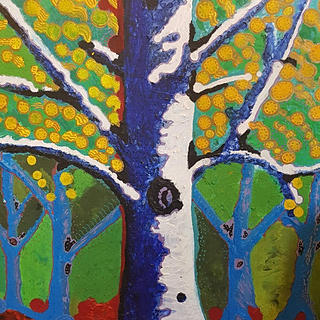Interpreting Art: Unveiling the Layers of Visual Expression
- Charm Manach Private Work
- Nov 10, 2023
- 2 min read
Greetings, art enthusiasts and seekers of creative wisdom! Today, let's embark on a fascinating exploration into the intricate world of art interpretation—a journey that transcends the canvas and invites us to unravel the rich tapestry of visual expression. Join me as we delve into the nuances of deciphering meaning, understanding context, and embracing the diverse perspectives that transform art into a profound and personal experience.

The Language of Visuals
Art, as a form of visual language, communicates without uttering a single word. The strokes of a brush, the interplay of colors, and the arrangement of forms all contribute to a complex dialogue between the artist and the observer. Interpreting art involves deciphering this language, navigating through the visual elements to extract layers of meaning.
Contextual Understanding
To truly grasp the essence of a piece, one must delve into its context. The historical, cultural, and personal context in which an artwork is created adds depth to its meaning. Consider the societal movements, the artist's biography, and the cultural zeitgeist—the context is the backdrop against which the visual narrative unfolds.
Embracing Subjectivity
Art interpretation is inherently subjective, influenced by the unique perspectives, experiences, and emotions each observer brings to the table. What one sees as a burst of vibrant energy, another may interpret as a serene contemplation. Embracing subjectivity allows for a diverse tapestry of meanings, creating a space for personal connections to thrive.

Symbolism and Metaphor
Artists often employ symbolism and metaphor to convey layers of meaning beyond the literal. A red rose may symbolize love, a winding path may represent life's journey. Delving into the symbolic language of art unveils hidden narratives, inviting viewers to engage in a symbolic dialogue with the artist.
The Artist's Intention
Understanding the artist's intention is a crucial aspect of art interpretation. While the viewer brings their unique perspective, delving into the artist's purpose, philosophy, and creative process provides valuable insights. Artist statements, interviews, and historical context all serve as windows into the mind of the creator.
Historical and Artistic Movements
Art does not exist in isolation; it is often a product of or a reaction to the prevailing artistic and historical movements. Exploring the influences of movements like Impressionism, Cubism, or Surrealism provides a broader framework for interpreting individual artworks. It allows us to see how artists contribute to or challenge the artistic conversations of their time.
Interactive Engagement
Interpreting art is not a passive endeavor; it invites active engagement. Encourage a dialogue between the artwork and your own thoughts and emotions. Ask questions, explore the details, and let the visual narrative guide you on a personal journey of discovery.
Conclusion: Art as a Personal Odyssey
As we navigate the realms of art interpretation, let us celebrate the diversity of meanings that art offers. Each brushstroke, color palette, and form contributes to a unique visual odyssey—one that unfolds differently for each observer. May your journey into art interpretation be as enriching as the creative process itself.
.png)




Comments